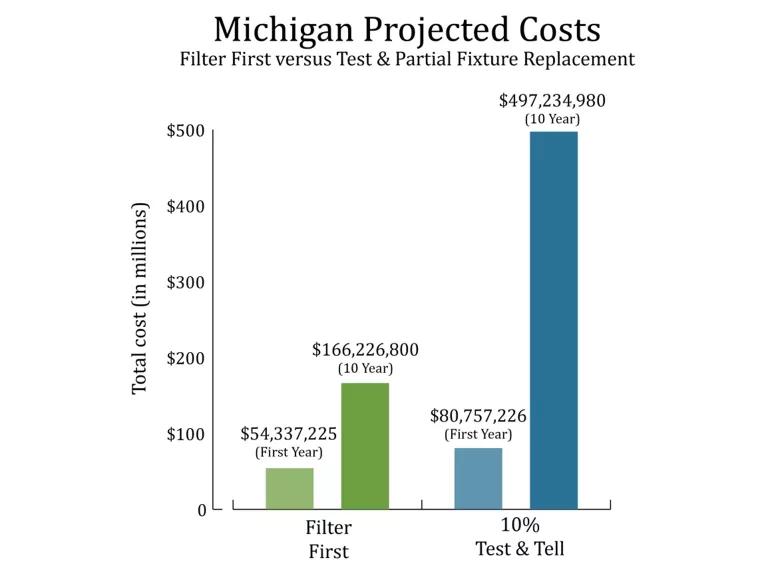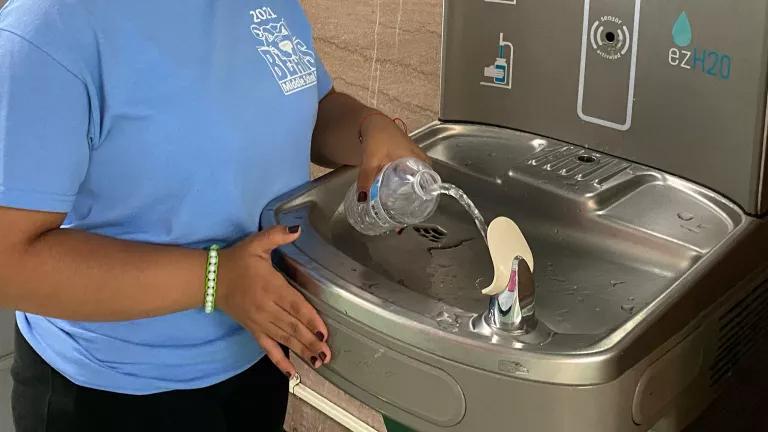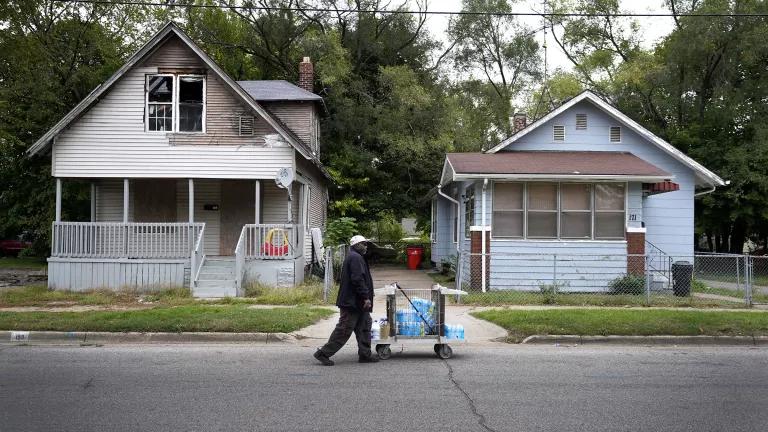MI Lawmakers Introduce Lead in Water Protections for Kids
These bills would help to ensure that Michigan children can access lead-free drinking water at schools and childcare centers.
Today, Michigan Senators Curt VanderWall (R-Ludington) and Jim Ananich (D-Flint) reintroduced their bills to help ensure kids throughout Michigan can access lead-free drinking water at schools and childcare centers. By sponsoring Senate Bill 184 and Senate Bill 185, which are based on NRDC’s Filter First approach, Senators VanderWall and Ananich and their co-sponsors are going straight to the solution by installing lead-removing filtered water stations. Other approaches waste scarce dollars on lead testing, chasing lead sources throughout school water systems, and replacing fixtures and fittings with “lead-free” devices that still contain lead.

Elin Betanzo, Safe Water Engineering, LLC
Michigan’s Filter First bills would:
- Ensure that schools and childcare centers create safe drinking water plans.
- Require schools and childcare centers to install filtered drinking water fountains and, in certain situations, on tap filters, and ensure that non-filtered outlets are removed or not used.
- Provide drinking water that does not contain lead because no amount of lead is safe.
- Require schools and childcare centers to test the filtered tap water annually to ensure that the filters are functioning properly.
- Ensure that schools and childcare centers communicate with families about the quality of drinking water provided to children.
- Create a fund within state government to make grants to schools and childcare centers in low-income communities to cover the cost of the Filter First program.
- Get schools as close as is feasible to the only safe level for lead—zero. The American Academy of Pediatrics says there is no safe level of lead and recommends that school drinking water should never exceed 1 part per billion (ppb) of lead. Filters are the most effective way to achieve this goal.
NRDC reviewed the lead in school drinking water occurrence data from New York State, which requires lead testing of all water outlets in public schools. What we found is:
- Around 82 percent of New York public school buildings reported one or more taps that tested above 15 parts per billion (ppb). The safe level of lead in drinking water is zero.
- More than 56 percent of New York public school buildings statewide tested above 15 ppb—the safe level of lead in drinking water is zero—at five percent or more of their water outlets, with a higher rate of taps outside New York City (59%) than inside New York City (51%).
- Almost 2% of the public school buildings statewide found levels above 15 ppb (the safe level of lead in drinking water is zero) for at least half of the outlets tested, with a higher rate outside New York City (2.4%) than in New York City (1.1%)
During the 2017-19 school year, Indiana conducted a voluntary lead in school drinking water testing program. Of the more than 1,700 eligible K-12 public schools and educational facilities, 915 (60%) enrolled in the program through which 57,000 samples were collected. Their samples revealed that 62% of schools had at least 1 fixture with lead over 15 ppb, and 7% of schools had more than 10 fixtures that sampled above 15 ppb.
Both New York and Indiana found that lead is present in the drinking water if you test for it. But even with the testing results from these states, they don’t have an accurate picture of lead levels in school drinking water due to the variability of lead release at each faucet or fixture; test results at the same water outlet can vary dramatically from one water sample to another—even if taken from the same faucet within hours of each other.
Investments in the Filter First approach provide health protections for children in schools and childcare centers; investments in programs that test and then remediate or chase the lead do not. Further, Filter First is the most cost-effective option for protecting kids from lead in school water as illustrated in NRDC’s Filter First Cost Estimates.
As highlighted in the “Michigan Projected Costs” graph, Filter First would save approximately $26 million in the first year when compared to the first-year price tag for testing, notifying, and replacing just 40% of the fixtures. Over a 10-year period, the Filter First approach is about 1/3 the cost of the test, notify, and replace 40% strategy meaning Michigan will save roughly $331 million with Filter First over 10 years.

Some have questioned why we don’t just replace all of the lead plumbing and fixtures when lead is detected through testing. There are at least two problems with that approach:
1. most school districts cannot make the immediate large upfront investment necessary to replace all plumbing and fixtures; and
2. even new fixtures, solder, and fittings contain lead. In contrast, we know that filters work when they are certified to remove lead and when they’re installed and maintained properly.
These bills have bipartisan sponsorship and support, meaning that Michigan is positioned to become the first state to implement a solution that actually gets lead out of drinking water in schools and childcare center while experiencing dramatic cost savings.


